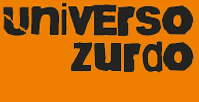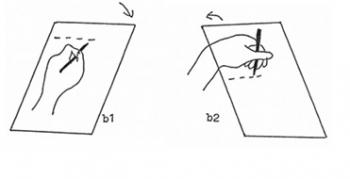

PEDAGOGICAL NOTES 6
19/12/2018
a) Position of the hand:
Taking into account that the position of the hand of the left-handed person in writing is always difficult, it is necessary to know which is the one that causes less disruption: the best position will be, therefore, the one that best suits each child, allows him to write more quickly , better and with as little fatigue as possible.
The two most frequent hand positions in lefties are:
a.1 - Hand below the line.
This is the most frequent position of all. Keep in mind that many times the hand is not really below the line but in a "sweeping" position, position of the hand parallel to the line of writing, passing over what is written. The angle that the line forms with the hand varies with age.
You can only ask for a position perpendicular to the line around 12-14 years old, with some left-handed children getting it beforehand due to techniques that help them.
In the case of left-handed children, it is necessary to improve the position of the hand in relation to the degree of flexion-extension and pronation-supination. Attempts are made to avoid flexion or extension and, above all, ensure that the hand does not rotate in pronation.
a.2 - Hand above the line.
We will find the forearm case parallel to the line and the hand in more or less pronounced flexion.
In general, this position of the left hand above the line is considered very inadequate in older ages since it is typical of the first ages (5-7 years), being preferable that it not be fixed as a habit, trying to get to move from a position of "sweep" to a position below the line, preventing the hand from accommodating above the line due to pedagogical lack.
b) paper layout:
b.1 - When the hand is below the line we will ask the child to place the paper on the left side, with the paper tilting to the right, even in the first ages. The paper can be tilted from 35º to 45º, even more if necessary, adjusted according to each case, this inclination will improve movement and visibility.
b.2 - When the hand is above the line, the paper is always placed in front of the child, it is usually kept straight. In this case we will advise the child to tilt the paper a little to the left as well as the right-handed ones, which facilitates the movement, while decreasing the flexion of the hand.















